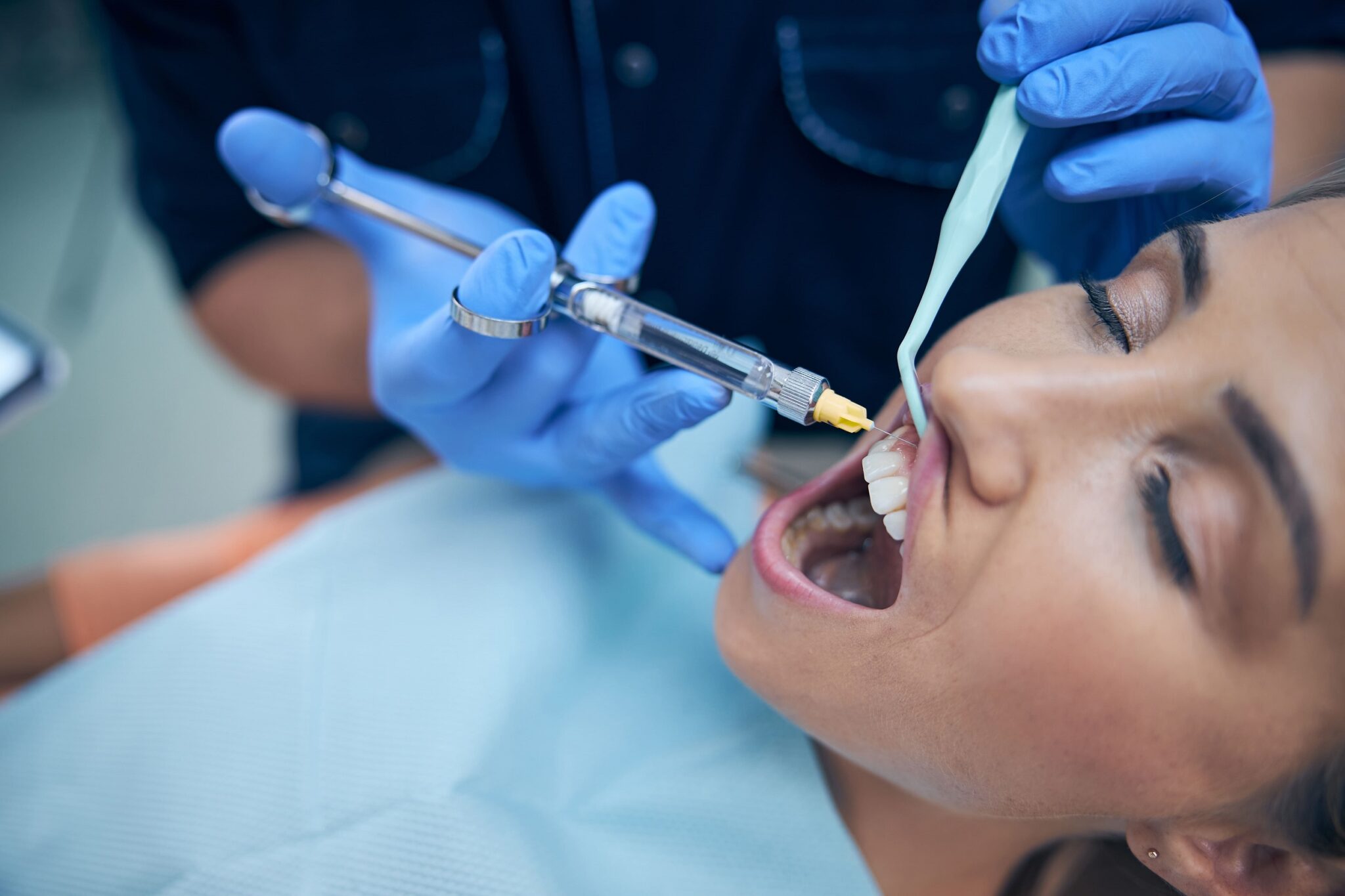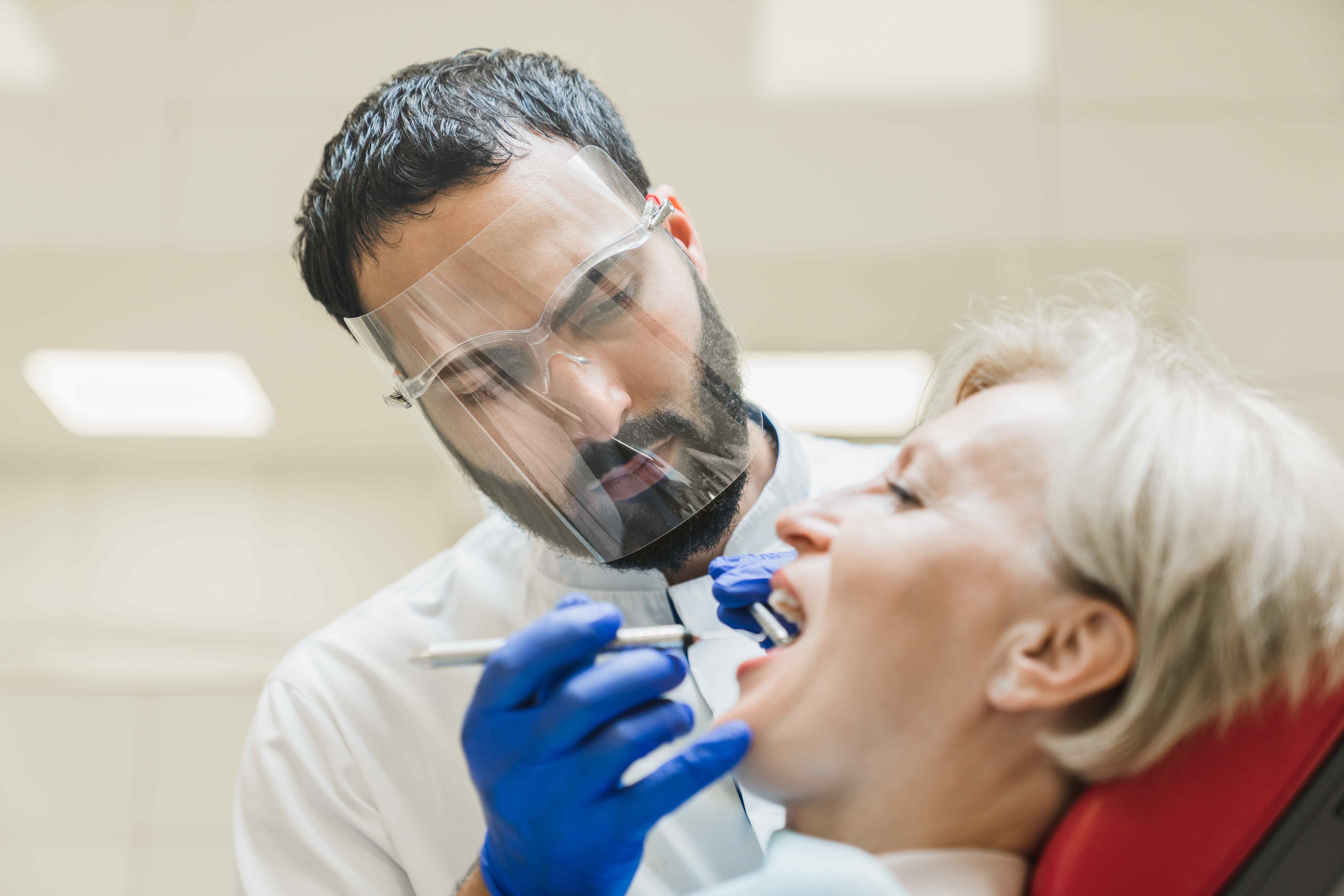Maintaining healthy gums involves more than just brushing, flossing, and regular dental visits. Increasing evidence…

Easing Anxiety and Pain: A Guide to Dental Anesthesia
Visiting the dentist can often evoke anxiety and unease in many individuals. However, we strive to alleviate these fears with our comprehensive guide to dental anesthesia and sedation techniques. Ensuring your oral health should not be compromised by dental phobias. Grasping the different kinds of dental anesthesia and the role they play in the relaxation process can be crucial in dispelling such concerns. This article is designed to provide insight into the diverse anesthesia methods utilized in dental clinics, their functionality, and their significance in ensuring a stress-free dental visit.
Nitrous Oxide
For short, straightforward dental operations, nitrous oxide, colloquially known as laughing gas, is commonly the preferred method of sedation. Administered through a mask positioned over your nostrils, this gas is inhaled in combination with oxygen. It rapidly induces a sense of peace, alleviating any slight uneasiness associated with the dental procedure. Nitrous oxide doesn’t cause unconsciousness; instead, it allows you to stay aware and communicate with your dentist during the procedure.
A primary advantage of this sedation method is its swift initiation and equally fast clearance. You’ll begin experiencing its calming influence within a few moments of inhalation. Similarly, these effects start to dissipate as soon as the mask is removed, enabling you to drive home post-procedure without any concerns.
However, it’s worth noting that while nitrous oxide effectively minimizes anxiety and fosters a serene atmosphere, it doesn’t relieve pain. Therefore, it is usually combined with a local anesthetic. This feature positions nitrous oxide as a perfect option for less intrusive procedures and for patients suffering from minor dental anxiety. Open communication with your Felton Dentistry caregiver about your comfort level and anxiety is crucial to determine the most effective strategy tailored to your unique needs.
IV Sedation
Intravenous (IV) dental sedation, frequently used for intricate or lengthy dental procedures, functions by introducing sedative medications into your bloodstream via an intravenous line typically inserted in the back of your hand or your inner elbow. This method allows dentists to fine-tune the sedation levels, ensuring your comfort while keeping you conscious but relaxed, rather than completely asleep.
During IV sedation, you may perceive a dream-like state or feel as if you slept through the whole procedure. Partial or total memory loss about the procedure is commonly reported among patients, which can be a positive aspect for individuals with substantial dental anxieties.
This technique is most frequently used for extensive dental operations like wisdom teeth extraction or dental implant placement. It serves as a critical resource for patients who may otherwise skip essential dental care due to apprehension or stress. However, it’s worth mentioning that this sedation level induces profound relaxation, necessitating that a companion drive you home post-procedure.
Remember, the main objective of IV dental sedation, like any dental anesthesia, is to ensure your comfort and minimize anxiety during your dental visit. Maintaining open communication with your dental care team at Felton Dentistry enables collaboration in selecting the most suitable anesthesia method for your needs and apprehensions.
Local Anesthesia
Local anesthesia is an extremely common choice for an array of dental procedures. Administered directly to the specific area being treated, substances such as Novocain are used to create a numbing effect. This occurs as the local anesthetic works to block the nerve signals in that particular area, preventing them from sending pain messages to your brain. Due to its targeted, effective pain management, local anesthesia is the preferred option for a wide array of treatments, from simple fillings for cavities to more complicated procedures like root canals,.
However, it’s important to understand that while local anesthesia successfully manages physical discomfort, it doesn’t offer any form of sedation. This means it doesn’t alleviate feelings of fear or anxiety. In situations where the patient experiences significant nervousness or dread related to the dental procedure, other forms of sedation like nitrous oxide or oral conscious sedation may be used in combination with local anesthesia. This dual approach can ensure not only a pain-free but also a stress-free dental experience.
Always remember to discuss your feelings and any apprehensions you may have with your dental practitioner. This helps them understand your needs better and choose the best combination of anesthetic and sedation that will ensure maximum comfort for you during your procedure. Open communication can also help your dentist provide you with appropriate after-care instructions, helping to ensure a smooth recovery following the use of local anesthesia.
Oral Conscious Sedation
Oral conscious sedation is another choice for dental anesthesia, typically preferred by those with intense dental phobias or undergoing extensive procedures. This sedation technique involves taking a prescribed pill prior to your appointment as guided by your dentist.
The tranquilizing effect ranges from light to moderate, subject to your dentist’s dosage. Despite the sedative’s influence, you maintain consciousness and responsiveness but are in a relaxed, sleepy state. The process often feels as if time flies, with limited memory of your procedure. This sedation can be coupled with local anesthesia to mitigate both physical discomfort and dental nervousness.
Post-procedure, a designated driver will be necessary due to lingering sedative effects. Discussing your dental fears with your dentist can help you decide if oral conscious sedation is appropriate for you, aiming to create a stress-free dental experience while valuing your comfort and peace of mind.
Choosing the Right Anesthesia Type for Your Procedure
Choosing the best form of anesthesia depends on various essential elements, such as the complexity of the dental procedure, the patient’s comfort and anxiety levels, and their overall health. For less complicated treatments, nitrous oxide, commonly used with local anesthesia, is often preferred due to its quick effect and fast recovery. In contrast, IV sedation or oral conscious sedation are often chosen for more complicated procedures or for patients with significant dental fear, as these offer deeper relaxation. It is critical to discuss your concerns or questions with your dentist. Such discussion allows them to consider your medical history, anxiety level, and personal preferences to choose the most suitable anesthesia for you. A thorough conversation will also give you a clearer idea of what to anticipate during and after the procedure, which can help alleviate any dental fears you might possess.
Recovery and After-Care
Post-dental procedure recovery times differ based on the anesthesia type used. For instance, nitrous oxide’s effects generally vanish once the mask is removed, enabling you to return to your routine almost immediately. On the other hand, deeper sedation methods like IV and oral conscious sedation may require several hours or even a day for complete effect wear-off. Local anesthesia usually wears off within a few hours after the procedure.
Regardless of anesthesia type, be sure to follow your dentist’s post-procedure instructions meticulously. Commonly, these may include light activities for a few days, hydration, and ample rest. The objective is to ensure your body recuperates adequately from the anesthesia, enabling a seamless and successful dental procedure. It’s vital to pay attention to your body and inform your dentist of any irregularities or prolonged post-procedure discomfort. Keep in mind, your dental care team is committed to assisting you throughout all stages, including recovery.


